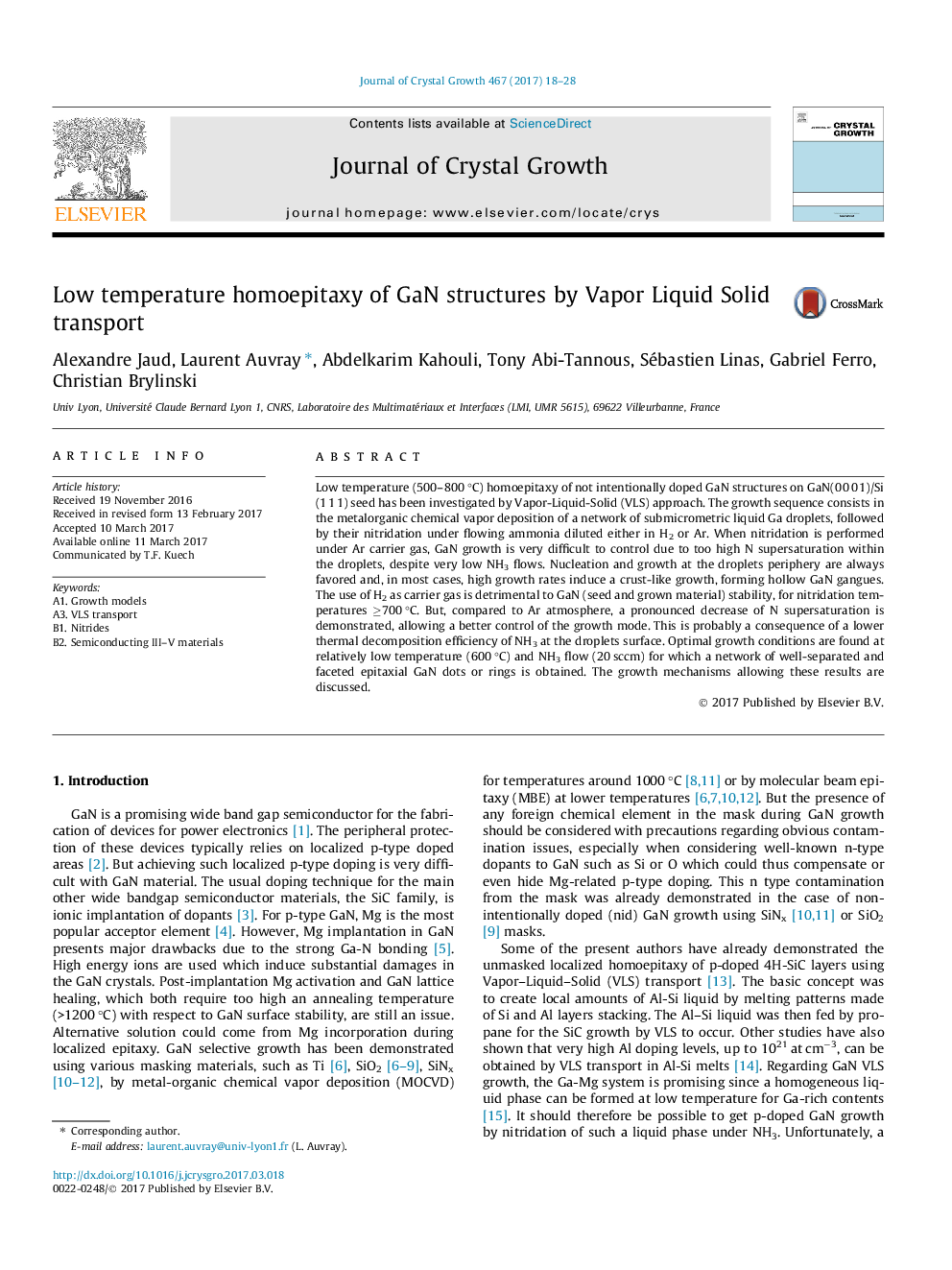| Article ID | Journal | Published Year | Pages | File Type |
|---|---|---|---|---|
| 5489493 | Journal of Crystal Growth | 2017 | 11 Pages |
Abstract
Low temperature (500-800 °C) homoepitaxy of not intentionally doped GaN structures on GaN(0 0 0 1)/Si(1 1 1) seed has been investigated by Vapor-Liquid-Solid (VLS) approach. The growth sequence consists in the metalorganic chemical vapor deposition of a network of submicrometric liquid Ga droplets, followed by their nitridation under flowing ammonia diluted either in H2 or Ar. When nitridation is performed under Ar carrier gas, GaN growth is very difficult to control due to too high N supersaturation within the droplets, despite very low NH3 flows. Nucleation and growth at the droplets periphery are always favored and, in most cases, high growth rates induce a crust-like growth, forming hollow GaN gangues. The use of H2 as carrier gas is detrimental to GaN (seed and grown material) stability, for nitridation temperatures â¥700 °C. But, compared to Ar atmosphere, a pronounced decrease of N supersaturation is demonstrated, allowing a better control of the growth mode. This is probably a consequence of a lower thermal decomposition efficiency of NH3 at the droplets surface. Optimal growth conditions are found at relatively low temperature (600 °C) and NH3 flow (20 sccm) for which a network of well-separated and faceted epitaxial GaN dots or rings is obtained. The growth mechanisms allowing these results are discussed.
Related Topics
Physical Sciences and Engineering
Physics and Astronomy
Condensed Matter Physics
Authors
Alexandre Jaud, Laurent Auvray, Abdelkarim Kahouli, Tony Abi-Tannous, Sébastien Linas, Gabriel Ferro, Christian Brylinski,
